
Chateaus & Castles of the Loire Valley

Chateau de Chambord
The châteaux of the Loire Valley (French: châteaux de la Loire) are part of the architectural heritage of the historic towns of Amboise, Angers, Blois, Chinon, Montsoreau, Orléans, Saumur, and Tours along the river Loire in France. They illustrate Renaissance ideals and the excellence in architectural design and construction in France's history.
The châteaux of the Loire Valley number over three hundred, ranging from practical fortified castles from the 10th century to splendid residences built half a millennium later. When the French kings began constructing their huge châteaux in the Loire Valley, the nobility, drawn to the seat of power, followed suit, attracting the finest architects and landscape designers. The châteaux and their surrounding gardens are cultural monuments which embody the ideals of the Renaissance and Enlightenment. Many of the châteaux were built on hilltops, such as the Château d'Amboise, while the only one built in the riverbed is the Château de Montsoreau. Many had exquisite churches on the grounds or within the château.
Castles were often centred on a massive keep ringed by watchtowers, drawbridges and ramparts, the castle employed a range of then cutting-edge technology to repel would-be invaders: defensive pinch-points, armoured gateways and reinforced artillery turrets, as well as a network of ‘murder holes’ from which the defenders could unleash boiling oil, tar and crossbow bolts. Ironically, these innovations provided little defence against the greatest threat – betrayal from within – and, more often than not, the fortresses fell as a result of treachery.
Whether medieval, renaissance, gothic, classical, or contemporary, the region is home to estates from all architectural styles and periods. Our castles provide a window into our past, they were living, breathing places, where people worked, toiled, served, fought and died.
Here is our selection of the most amazing chateaus of the Loire region.
* Château de Chambord
Built in a rather desolate plain and surrounded by hunting forests, Chambord is a prestigious castle, that was hardly ever inhabited. Commissionned by King François Ier in 1519, it was in construction until the death of the king to end only under King Henri II. Francois Ier was at first impatient, but lost interest rather quickly. Towards the end of the reign, he came very little to Chambord. Perhaps he found – the castle old-fashioned. The principal masons engaged for the realization of the castle are Jacques Sourdeau, one of the builders of Blois, Pierre Trinqueau, who seems to have preserved until his death, in 1538, the direction of the work, and Jacques Coqueau. Several drawings of the building were established before the start of construction. A wooden model was executed by Dominique de Cortone and it is thought that Leonardo da Vinci, during the last years of his life spent in the Loire Valley, intervened in the development of Chambord's plans. Chambord today is the most famous Loire castle.
* Chateau de Chenonceau
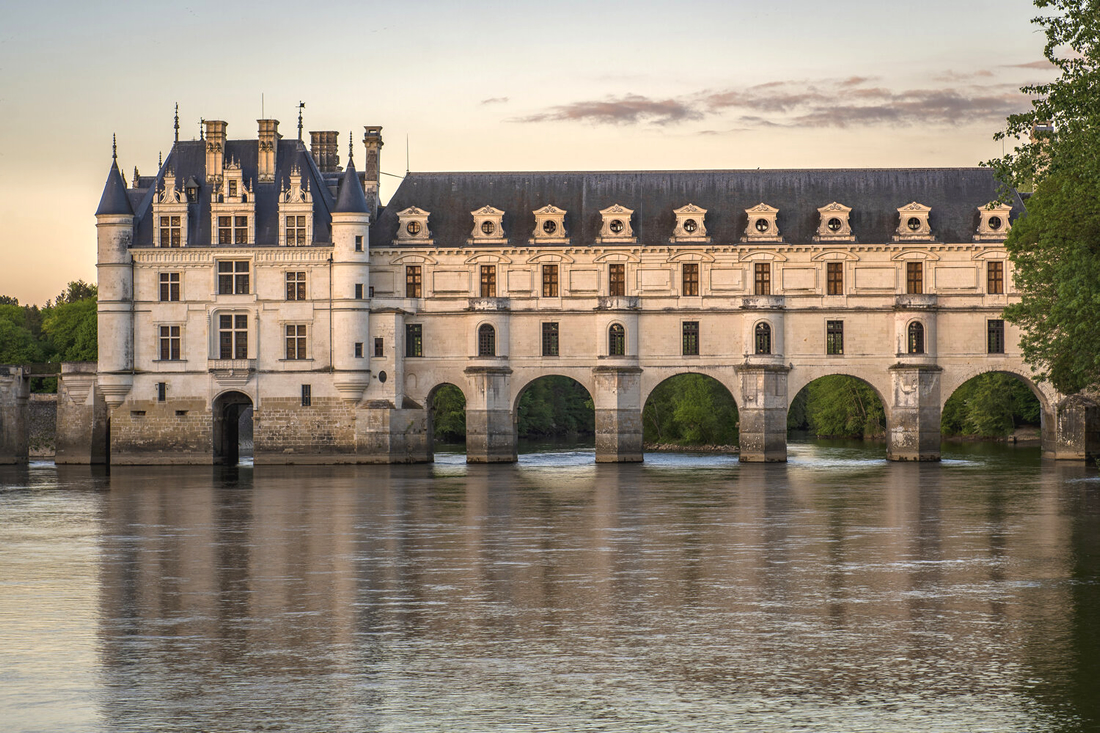
Chateau de Chenonceau is the most visited and photographed chateau of the Loire Valley in France. It is often described as ‘the ladies chateau’ as throughout its history it is they who have most influenced its design and its destiny...it was not always the chateau we see today.
Thomas Bohier, in 1512, acquired what was a small fortress by the river Cher and decided to replace it with a 'Renaissance' style chateau leaving only the keep from the original building.
It was his wife Katherine Briconnet who oversaw its build as her husband spent a lot of time away at war and she has left a great legacy. The chateau was later held over to the monarchy to pay-off debts and used by them to stage hunts and festivals.
Henri II gave it to his mistress Diane de Poitiers it was she who added the bridge over the Cher as well as the gardens.
When Henri died, the Queen, Catherine de Medici, forced Diane out of Chenonceau (to Chateau de Chaumont), even though by then she was its legitimate owner. Catherine proceeded to build the gallery and grand ballroom on Diane’s bridge which finally gave Chenonceau its now iconic look.
Diane would in fact refuse to live at Chaumont and the "Eternally Beautiful" lady of Chenonceau would finish her days in the nearby castle of Anet.
* Chateau de Cheverny
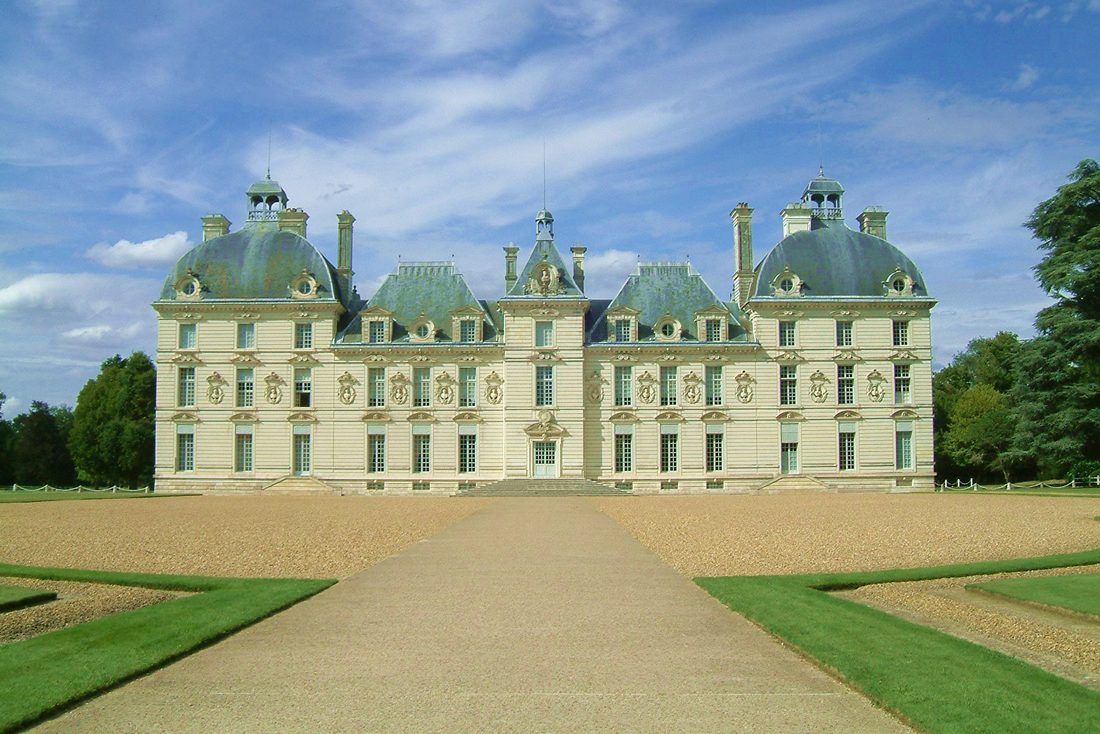
Chateau de Cheverny is a rare thing within the Loire Valley - a chateau that appears untouched by the Renaissance. This could have a lot to do with the fact that it has remained in the same family, the Huraults, for six centuries. Built sometime between 1604 and 1635,depending on whose account you read, the 17th century chateau is built in pure Louis XIII classical style with a rigid symmetry. The look is softened by the architect’s use of different roof styles from bell towers to domes.
The chateau you see today is as it was originally built and the feeling of stepping back in time is only enhanced by a visit inside where it is impressively decorated and furnished. As with many of the Loire chateaux ladies played a major part in its construction and decoration with Marguerite Gaillard (Mrs Huraults ) directing the build and her daughter completing the decoration. The furniture of the 'private' apartments of Chateau de Cheverny incorporate designs, celebrating the Egyptian campaigns of Napoleon Bonaparte.
The chateau is still owned by descendents of the original builders, the Hurault family and has retained an intimate charm. The interior reflects a living history of the generations of the family. The largest room, The Arms Room contains weapons, tapestry, chests, trunks and a carved wood chimney piece painted by Jean Monier in the 17th century. There are priceless tapestries all through the chateau as well as paintings and rare furnishings. There is an orangey within the grounds that was used during the second world war as a safe haven for many works of art from the Louvre in Paris, including the Mona Lisa.
* Château de Blois
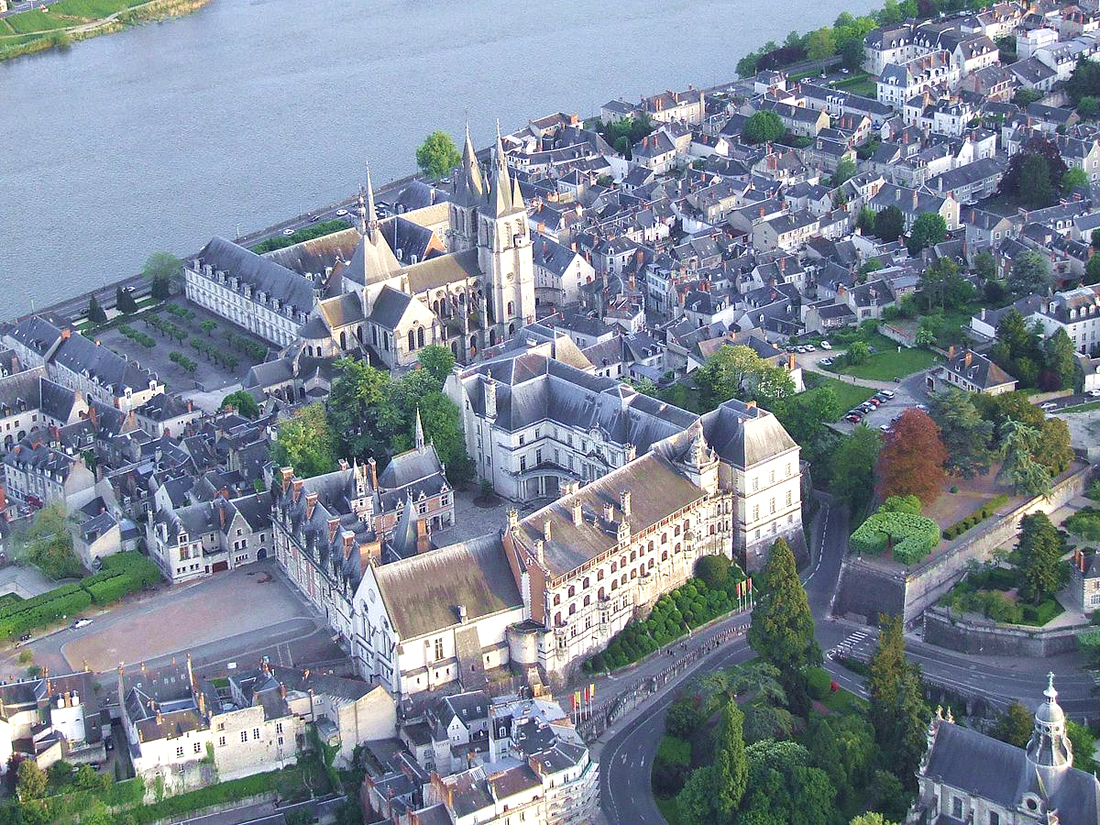
The Chateau of Blois is not only one of the most prestigious Renaissance monuments in France but also a brilliant illustration of the evolution of the French architecture from the Middle Ages to the 17th century. It has a great royal history from Louis XII who built the oldest part of the chateau to Francois I who added the renaissance wing with the unique open circular staircase. Official residence of the Kings of France during the Renaissance, it was a capital place of the history of France, in particular during the wars of Religion.
The first castle was built in the Middle Ages. It was in 1500 that began the work undertaken by King Louis XII. The castle became the official residence of the royal family. The successor of Louis XII, François Ier, his cousin, rebuild the castle The last part that was built was done by Gaston of Orleans, the last great prince in the 17th century. The medieval castle became a royal residence and the political capital of the kingdom under Louis XII. At the beginning of the 1500’s, the king initiated a reconstruction of the castle and the creation of a renaissance garden. These were later lost with the formation of Avenue Victor Hugo.
The first site of the 'Stateroom',the first room of your visit, almost takes your breath away, dating from 1214 its two naves separated by six columns are spectacularly ornate.This grand room was used by the counts of Blois as a courtroom.
The most complex castle of the Loire continues to attract 300,000 visitors each year.
* Chateau de Azay-le-Ferron
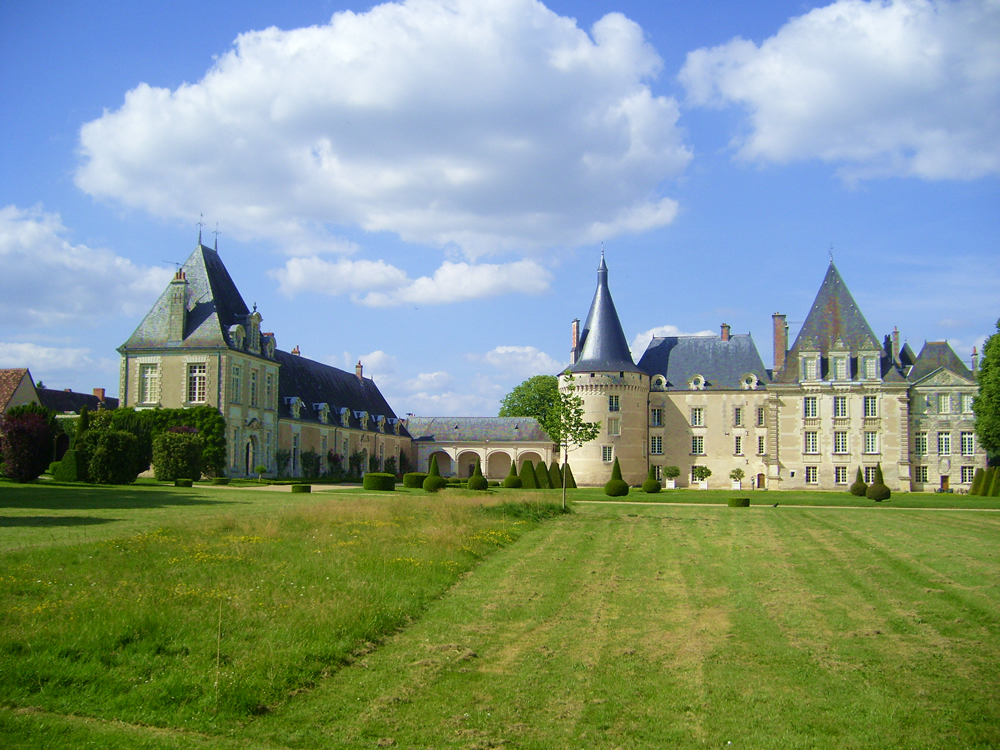
The chateau at Azay-le-Ferron is not one you will find on many 'must see' lists of Loire Valley chateaux but if you are visiting Southern Touraine you should include this exquisite building in your itinerary. Located in the department of Indre in France, in the village of the same name, the chateau's architecture is from the XV to the XVIII century. Visiting here is like travelling through history. From the outside you can observe the different influences on its build and design. Each owner has added something to this Chateau, a tower (built during the 15th century), a garden, an entire wing, or just internal corridors.
There are 18 rooms open to the public. Each of them sumptuously decorated from different periods. The visit takes you through the halls, kitchens, bedrooms, libraries and dining rooms. Children are prompted by the tour guide to discover secret doors that lead to secret passages joining the rooms.
Its interior evokes the life-style of a rich and comfortable rural residence where hunting parties and receptions were organized until the early 20th century. The history of the Chateau dates back to 1250 with the name of its first owner, Le Chevalier Banneret, Nicolas de Turpin de Crisse. The successive owners remained Barons until 1789. After that, the Chateau was bought by a businessman and later by a banker for Napoleon. In 1833, the Chateau was bought by the Luzarche family; master blacksmiths but they had to donate the Chateau to the city of Tours in 1951 because they had run out of inheritors.
The Chateau has 1000 Hectares of woods. There are around 20 hectares of gardens made up into various "styles", like the French style garden, the English style garden, the vegetable garden, the rose garden (with roses going back as far as the XIX century), topiaries, vineyards, orchards and so on.
* Chateau de Fougeres-sur-Bievre
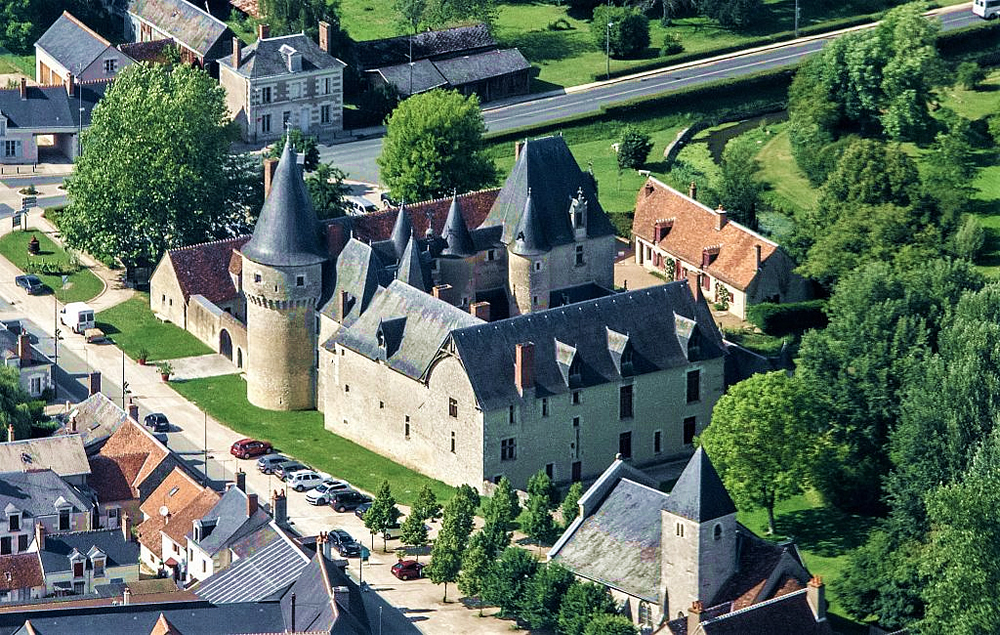
Chateau Fougeres-sur-Bievre is in the small but charming village of the same name which lies 10km southwest of Cheverny in the department of Loir-et-Cher. What you see today is castle that was rebuilt after its predecessor was destroyed during the Hundred Years War (l'englais again!) and judging by the structure it looks as if they were anticipating another! It was even better defended than you see today as it would have had a moat, now filled in and drawbridge. It is a veritable fortress, turned tightly in on its internal courtyard.
* Chateau de Brissac
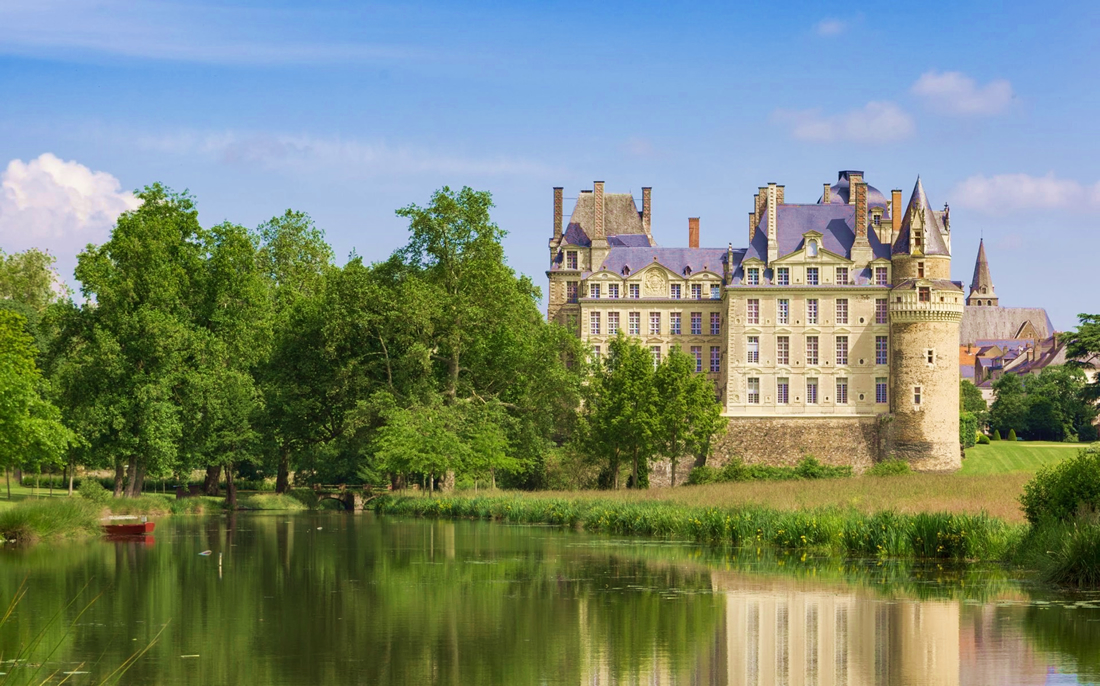
The Château Brissac, in the département of Maine-et-Loire, France, was originally built, like most of the Loire Valley chateau, as a fortified castle by the Counts of Anjou in the 11th century. After the victory over the English by King Philippe II of France, he gave the property to Guillaume des Roches.
In the 15th century, it was rebuilt by Pierre de Brézé, a wealthy chief minister to King Charles VII. During the reign (1515–1547) of King Francois I, the property was acquired by René de Cossé, who the king named as governor of Anjou and Maine.
During the French Wars of Religion, Chateau Brissac was severely damaged and the fortress was scheduled to be demolished. However, Charles II de Cossé sided with Henri of Navarre who was soon to be crowned King of France. In gratitude, King Henri gave him the property, the title Duc de Brissac and the money to rebuild the chateau in 1611. Its construction made it the highest chateau in France, its façade reflecting the influences of that century’s Baroque architecture.
Through marriage, the Cossé-Brissac family also acquired the Chateau Montreuil-Bellay but later sold it. The descendants of the Duc de Brissac maintained the chateau until 1792 when the property was ransacked during the Revolution. It lay in waste until a restoration program began in 1844 that was carried on during the 19th century by the Duke's descendants. Today, the Chateau Brissac is still owned by a de Cossé family member.
Chateaux Page 1.
Home ..la Gidonniere. .History . Weddings...Gites...Climate ..Getting There.. The Chateaus ..The Loire...Festivities...France
Tours ..Le Mans...Orleans.. Blois.. Brittany.. Sightseeing.. Our Wines... Loire Wines.. Delicacies . French Food
Activities . Nature...Bird Watching..,Roses...Persian Art.. Ceramics...Tapestries...Costing/Booking...Contact
_________________________________________________________________________________________Copyright © March 2022__________________________________________________________________________________________________